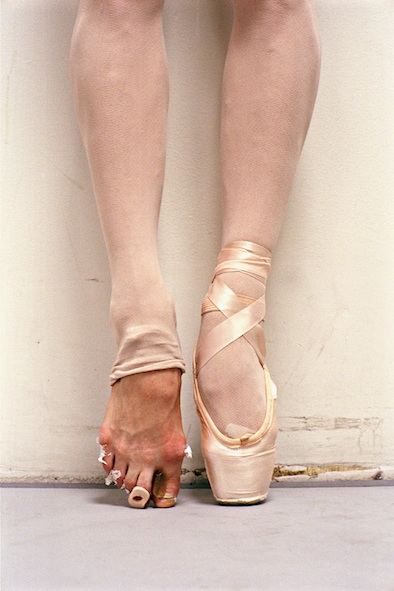En Pointe, Demi Pointe, Posterior Impingement ?
When we see pictures like this most of us are triggered to look at the toe and the challenges to the 1st MTP joint. But what about all that compression and crowding in the back of the ankle ? Posterior compression is a reality in athletes who spend time at end range plantarflexion or pack much force and load through end range plantarflexion.
This is a photo example of what is referred to as “en pointe” which means “on the tip”. “Demi pointe” means on the ball of the foot which is much safer for many areas of the foot, but this requires adequate 1st MTP (metatarsophalangeal joint range). We discussed this briefly this week on social media regarding hallux limitus and rigidus.
En Pointe is a terrible challenge. So if you are thinking of putting your darling children in ballet…… just beware of the facts and do some logical thinking on your own when it comes to allowing the “en pointe” axially loading of the entire body over a single joint, a type of loading that this joint was never, ever, designed to withstand. This joint is a great problem for a great many in their lives, why start playing with the risk factors so early ? Let them dance, into demi pointe, but pull them once they are being forced in to En Pointe, if you want our opinion on the matter.
En pointe or classical point ballet it typically done in point shoes or slippers which have a reinforced toe box that allows a more squared off stable surface to stand in pointe position. It does not however allow a reduction in the axial loading that you see in this picture and it certainly does not help with proper angulation of the big toe, if anything the slipper will gently corral the toes together rendering abductor hallucis muscle function nearly obsolete. The box will also not stop the valgus loading that typically occurs at the joint. Despite what the studies say, this is one we would watch carefully. Now, there are studies out there that do not support hallux valgus and bunion formation in dancers, we admit that. However, we are just asking you to use common sense. If you see a bunion forming, if the toe is getting chronically swollen, if the toe is drifting off line then one must use common sense and assume that the load is exceeding joint integrity. Prolonged and excessive loading of any joint cartilage is likely to create a risky environment to crack, fissure, wear down or damage the cartilage or the bony surface underneath (subchondral bone). If you screw up this joint, toe off will be impaired and thus the windlass effect at the joint will be impaired thus leading to a multitude of other dysfunctional foot issues in the years to come.
Now, back to the “en pointe” position. Did you try it yet ? Heed our warning ! Just trust us, this is bloody hard. Since serious foot deformities can result from starting pointe too early, pre-professional students do not usually begin dancing en pointe until after the age of 10 or so , remember, the adolescent foot has not completed its bone ossification and the bone growth plates have not closed. Thus, damage and deformity are to be expected if done at too young an age. If you asked our opinion on this, we would say to wait until at least the mid-teenage years……. but by that point in the dance world a prodigy would miss her or his opportunity. Thus, we see the problems from going “en pointe” too early in many. In the dance world, there are other qualifications for dancers before En Pointe is begun. Things like holding turnout, combining center combinations, secure and stable releve, 3rd position, 4th position, 4th croise and 5th position all of which are huge torsional demands on the hips to the feet. Do you want your child undergoing these deforming forces during early osseous development ?
Achieving en pointe is a process. There is a progression to get to it. Every teacher has their own methods but it is not a “just get up on your toes” kind of thing.
Are you a dancer with posterior ankle pain, impingement or disability. The Os trigonum and protruding lateral talar process are two common and well-documented morphological variations associated with posterior ankle impingement in ballet dancers.
Think this stuff through. If you are going to be treating these things, you have to know the anatomy, loading mechanics and you have to know your sport or art. Dr. Allen was a physician for the world famous Joffrey Ballet for a few years, he knows a thing or two about these issues dancer’s endure. And he still has a few nightmares from time to time over them.
Dr. Shawn Allen
reference:
Clin Anat. 2010 Sep;23(6):613-21. doi: 10.1002/ca.20991.Pathoanatomy of posterior ankle impingement in ballet dancers. Russell JA,Kruse DW, Koutedakis Y, McEwan IM, Wyon M


















